Sony Xperia P Review
Sony Xperia P
Attractive, well built, and with a few neat features, this is a solid mid-range handset.
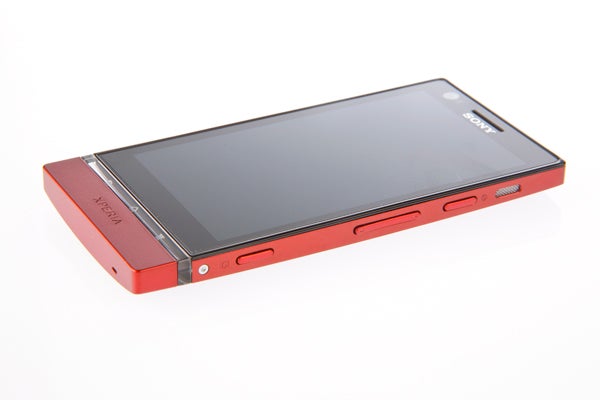
Verdict
Key Specifications
- Review Price: £260.00
- Dual-Core 1GHz processor
- 4in, 960 x 540 pixel screen
- WhiteMagic display for brighter image and lower power
- Android 40
Design
Where the Sony Xperia P starts its assault is with its design. It’s smart and sleek yet quirky too. It has the same overall vibe as the Xperia S, with the Xperia line’s signature features of the curved back, pointy corners and the clear strip running through the bottom section. But while we felt the S fell short of expectations the P actually exceeds them. This is for two reasons. The first is it uses a more premium looking and feeling metal back, and the second is that our expectations are markedly lower to start with, this being a mid-range handset after all.
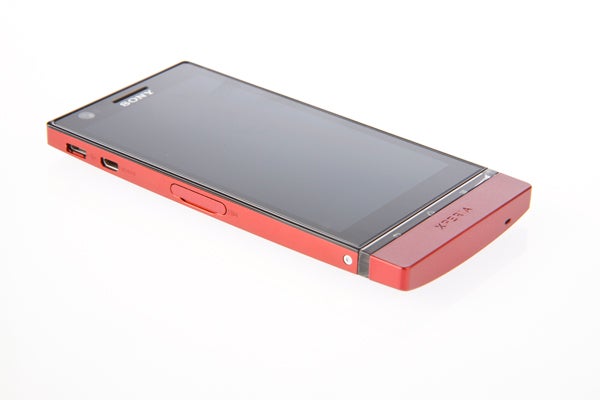
The design isn’t perfect though. One thing we didn’t like about the Xperia S that the Xperia P hasn’t managed to fix is the bitty look and feel. The screen has an unsightly lip around it, the front facing camera really stands out and the pathetic flap that covers the SIM slot lets the side down. Nonetheless, overall the Xperia P is a handset we’d happily be seen with.
Ergonomics and Connectivity
What’s more, it’s not all about vanity either. The Xperia P’s design appeals because it’s actually easy to handle too. It has a modest 4in screen so its overall dimensions are a manageable 122 x 59.5 x 10.5 mm. These proportions also put the side mounted power button cum screen lock switch directly under thumb or finger for easy one handed operation. Likewise the volume rocker, while the touch sensitive navigation buttons set into the plastic strip beneath the screen aren’t a stretch either – and they work well too. Only the slightly uncomfortable pointy corners and slightly over-stiff buttons are an issue, and they’re not much of one.
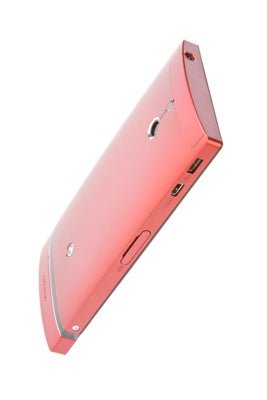
In contrast, the Xperia S is hardly the largest handset going but nevertheless it felt little bigger (and heavier) than we like, its buttons don’t quite fall so nicely into place and its touch buttons are awful.
Added to these great basics the Xperia P has a shutter button for the camera and a microHDMI socket, so it’s easy to take pictures and hook your phone up to a TV to look at said pictures. You don’t, however, get expandable storage by way of a microSD slot (you get 16GB of built in storage), and in fact you can’t remove the backplate to replace the batter either, or at least not without getting a screwdriver out.
On the wireless front you only get Blutooth v2.1 rather than v4.0 but this a relatively minor slip up. You also get everything else you should want with Wi-Fi n, NFC and quad band 3G all present and correct, so you can stream, sync, talk and text from just about anywhere.
Overall then we think the Xperia P has one of the most compelling combinations of ergonomics and features currently available, particularly if you’re not into these really big phones.

Screen
Not dropping the baton is the screen, which although
not up there with the biggest and best is only a step below. It’s an LCD
so suffers from a slightly grey look to dark images, and there’s a
little bit of contrast shift when viewed from an angle. What’s more it
has only 540 x 960 pixels, which is a fair few less than the 720 x 1280
panels of the top dogs. So, a Samsung Galaxy S3 or HTC One X beater it
isn’t.
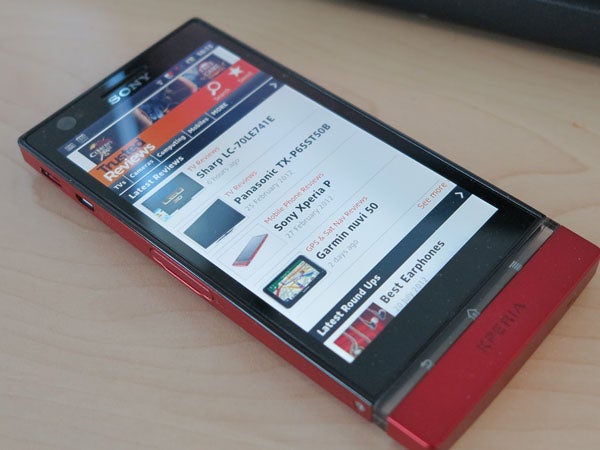
But, the resolution is a step above the 480 x 800 panels
that were standard a year ago and combined with the modest 4in screen
size it makes for a screen that’s plenty sharp enough for a nice
experience whether web browsing, reading emails, watching video or
playing games. It’s also reasonably colourful, and because there’s no
air gap between the glass screen and LCD display below, the image looks
like its right on the surface of the glass, giving great viewing angles.
In terms of responsiveness, it’s absolutely fine too, and
you’ve got scratch-resistant glass to keep the phone looking fresher for
longer.
Performance
Turning the phone on, the Android interface feels quick to respond and its animations are nice and smooth – there’s no stutter vision here. Powering the Xperia P along is a dual-core 1GHz chip (the NovaThor U8500 with Mali-400MP graphics, to be precise), which may sound a little weedy compared to the quad core, 1.5GHz models topping the charts but in practise it’s plenty fast enough.
In fact, putting the phone to the test with a few benchmarks, it performs even better than expected, nearly drawing level with the HTC One X in the CPU tests, SunSpider and BrowserMark.


It’s much less impressive on the graphics front, with it only just beating the HTC One V in GLBenchmark, but for most games it will be more than sufficient, particularly given it’s not having to render them at HD screen resolutions.

When it comes to making calls, we found signal quality to be a little more ropey than we’re used to with garbled and broken up voices occurring as a result. But, as ever, such findings have to be taken with a pinch of salt as signal strength varies so wildly from carrier to carrier and location to location, and notably we never dropped a call.
Otherwise the actual sound quality is very good, with the earpiece delivering clear, natural sounding voices, and the mic delivering a pleasing tone too.
Interface
The Sony Xperia P runs Android and the overall experience will be instantly familiar to those that have already dabbled in Google’s mobile OS. And even if you’re new to the platform, it’s easy to get to grips with, in particular thanks to the comprehensive walkthrough that’s activated when you first power the phone on.
There is a downside, though, which is that this phone runs the rather ancient 2.3 version of Android, rather than the 4.0 version most newish handsets use. Okay, so 2.3 is still used on loads of very decent older phones and it’s still very capable, but there are a few nice enhancements in 4.0/4.1 that will be missed. An Android 4.0 based update is in the works, though, and is expected to arrive in early August.
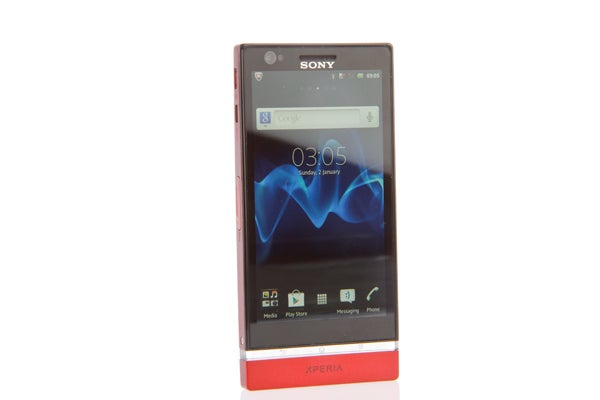
Sony has fairly heavily tweaked the Android interface to both the betterment and detriment of the experience, but overall it remains easy to use.
Some positives include the addition of Sony’s Music Unlimited and Video Unlimited streaming services, which are both among the best manufacturer specific services of their kind, with reasonable prices and a vast catalogue of content that taps into Sony’s motion picture and music archives.
Another fairly obvious change is that you’re given the option of whether to have the main apps menu order itself alphabetically, in order of most used or most recently added, or in an order of your choosing. We’re fans of the default alphabetical way but at least the other options are there.
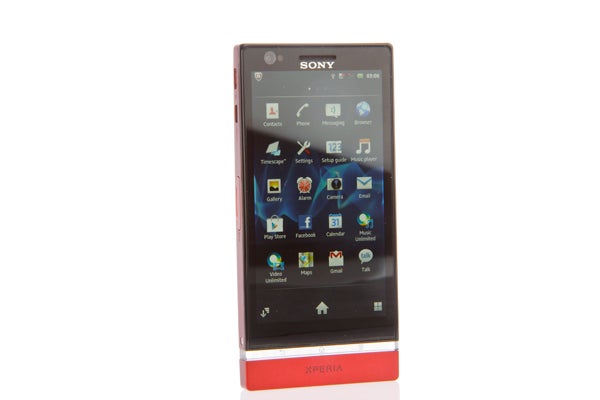
Another tweak are the default icons along the bottom of the screen. These are customisable but out of the box the bottom left is home to a folder of multimedia apps – gallery, music, FM radio and camera. We like how this both brings some useful apps to the fore without needing any user customisation, and for those new to Android it highlights what you can do with folders.
On the flip side, there are some distinct oddities, such as the phone resetting every time you add or remove the SIM card. You also can’t use the phone on Wi-Fi for anything but web browsing when no SIM is installed. Sony has also failed to add any quick access settings in the drop down notification area – things such as switches for quickly turning Wi-Fi, Bluetooth, or 3G on/off – which are quite common on other Android handsets.
Messaging and Contacts
Another tweak Sony hasn’t made is to the Contacts and dialler page. You get predictive dialling, where it matches both number and name as you type, and it’s a cinch to import and synchronise your Google, Facebook and twitter contacts. However, you don’t get that next level of integration where pictures and status updates from your friends actually appear in their contact page – Windows Phone People Hub this is not. You’ll have to jump into the respective apps to catchup on your friend’s goings on.
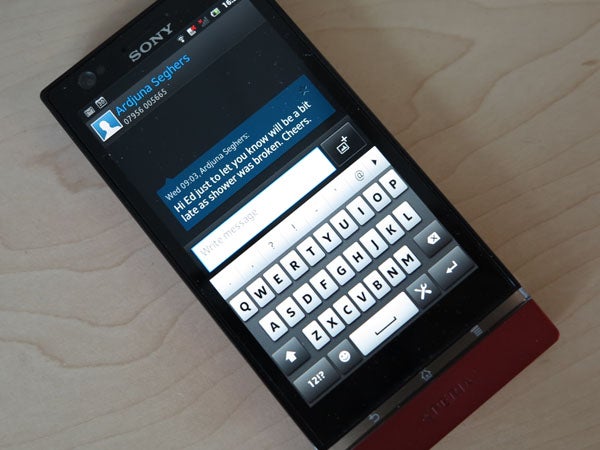
Despite the relatively small screen and what looks like it isn’t the easiest to use onscreen keyboard, the typing experience is very good. The phone responds quickly, keeping up with our fast typing, and more often than not it correctly guesses what word we’re after. Being Android you can of course just install your favourite alternative keyboard.
When it comes to the SMS and email apps, we had no concerns – they’re simple and easy to use.
Web browsing is likewise something that threw up few concerns. The browser’s fast, renders pages properly and all the key features you need are easily accessible thanks to menus appearing from the bottom rather than the top of the screen, putting them within easy thumb reach. What’s more, being as this phone uses an older version of Android, it still has Adobe Flash support, unlike Android 4.1. The only points of contention are that there are no dedicated onscreen buttons for Back and Forward, with the browser instead relying on the hardware back button and a trip to the menu for Forward.
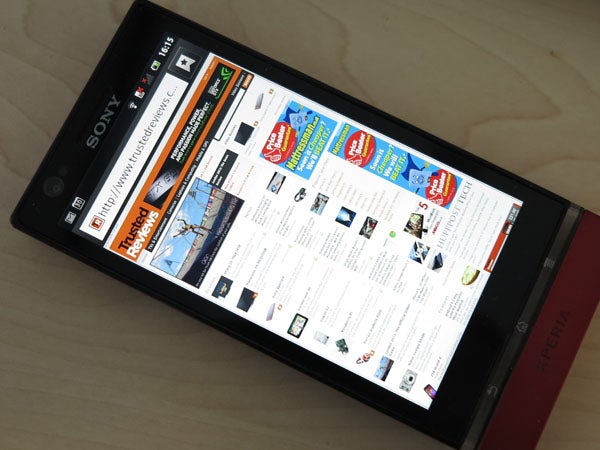
Otherwise we’re looking at fairly standard Android apps. Google Maps and Navigation, Facebook, Twitter, Clock, Gallery, Fm Radio, Alarm, YouTube. All are present and correct and easy to use too. Jump into the Google Play App store and you can add a plethora more.
Media
As is mostly the case with Android phones you don’t need to run any extra software to drag and drop a few music, picture and video files (or whatever else for that matter) onto the phone, so it’s easy to chop and change your tunes, not matter whose PC you’re using.
Music playback is the usual basics of mp3s and wmvs with no fancy flac support or such like, but you can download apps that will support almost any file type. Playback quality is also good, with no background hiss and a generally pleasing tone, with plenty of volume on offer. As we’ve come to expect from Sony, the included earphones are also a step above your average, though still nothing spectacular.
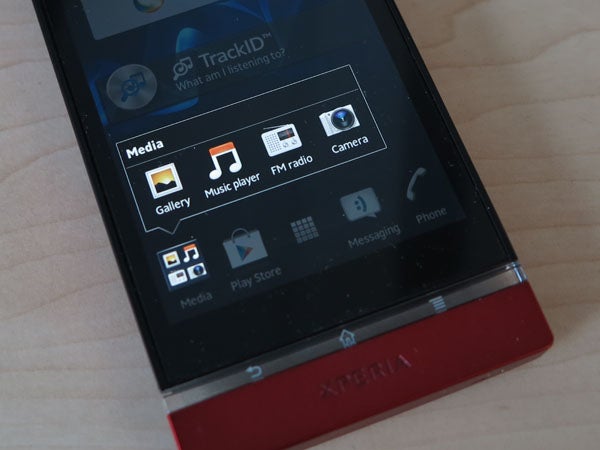
It’s a similar story for video with native playback support being fairly mediocre but with the help of a few apps you can play just about any file that’s 720p resolution or lower. The 4in screen doesn’t quite have the tablet-replacing impact of larger phones but it’s enough that you can happily watch an episode of something on the way to work.
The gallery is essentially the standard Google one, which isn’t all that clever – the gallery is one app that really benefited from the 4.x updates. But, if shows your pictures and has easy access to share facilities.
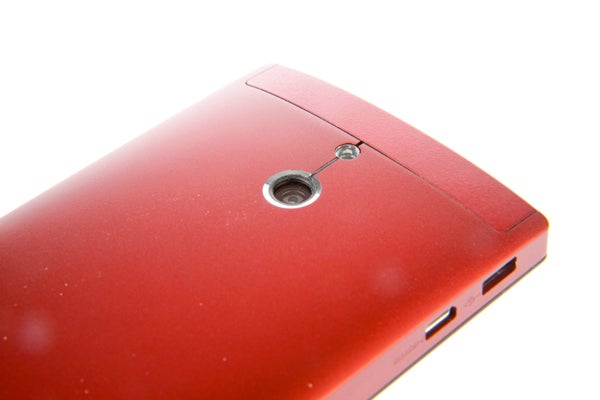
Camera
When it comes to taking your own pictures, the Sony Xperia P has an 8MP camera with autofocus, an LED flash and dedicated shutter button, and it can shoot 1080p video too. All that sounds like it should make for a phone that’s great as a reliable out and about snapper. However, while mostly very good, it isn’t perfect.
The mere fact it packs in 8MP means you can capture a decent amount of detail in your shots, and colour reproduction in good lighting is nice too. However, it doesn’t cope with difficult lighting conditions as well as the iPhone 4S in particular. Low light shooting is also a step below the best thanks to a relatively weak LED flash. It’s comparable to most of those of last year’s phones but a step below the best now. The shutter button is also a tad stiff leading to wobbly shots as you press too hard, and there aren’t many built in fun effects.
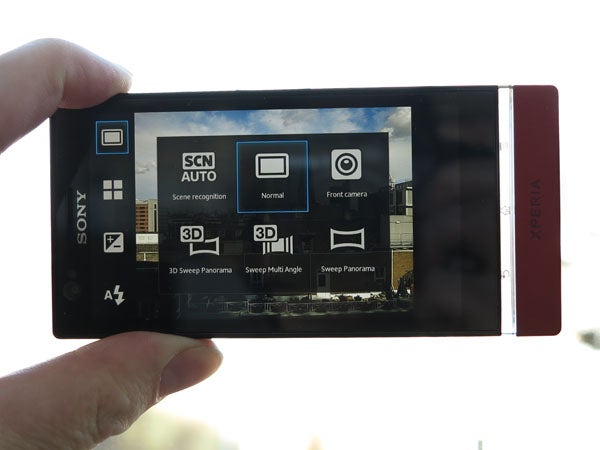
Nonetheless, the core abilities are decent and with a very easy to use sweep panorama and 3D sweep panorama mode (you can view the latter on your 3D TV using the microHDMI socket), there’s enough here to keep us happy.
Video recording has much the same pros and cons with reasonable quality and ease of use but not much in the way of fun extras.
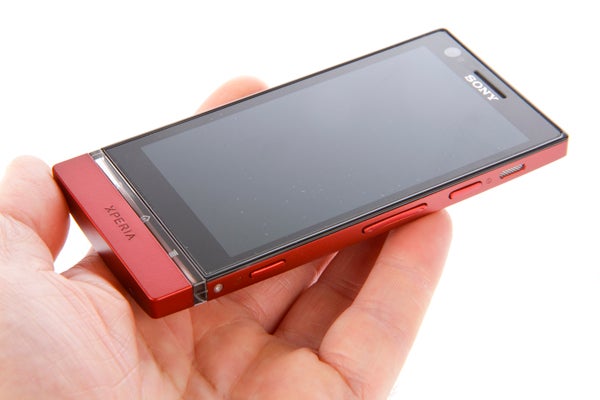
Value
It’s clear then that the Xperia P isn’t a world beater but with a set of features (metal body, 8MP camera with shutter button, microHDMI socket) that few phones offer at this size and sub-300 price, it holds up very well on the value front.
A few options such as the ZTE Grand X offer a similar combination of dual-core performance and a decent modest sized screen, but few add the extras. That said, if you want a cheaper option and Android 4.0, the ZTE Grand X is an impressive offering.
Verdict
We like the Sony Xperia P a lot. It looks nice, is well built and offers a great set of core features, with dual-core performance, 8MP camera and sharp display, all wrapped up in a modest sized handset. Add in some unexpected extras like microHDMI connectivity and NFC and you’re onto a winner. It’s not without its issues but we think this is a cracking option for those looking for a small but capable Android phone.
How we test phones
We test every mobile phone we review thoroughly. We use industry standard tests to compare features properly and we use the phone as our main device over the review period. We’ll always tell you what we find and we never, ever, accept money to review a product.
Trusted Score
Score in detail
-
Performance 7
-
Camera 7
-
Design 8
-
Usability 8
-
Value 9
-
Features 7
-
Screen Quality 7

